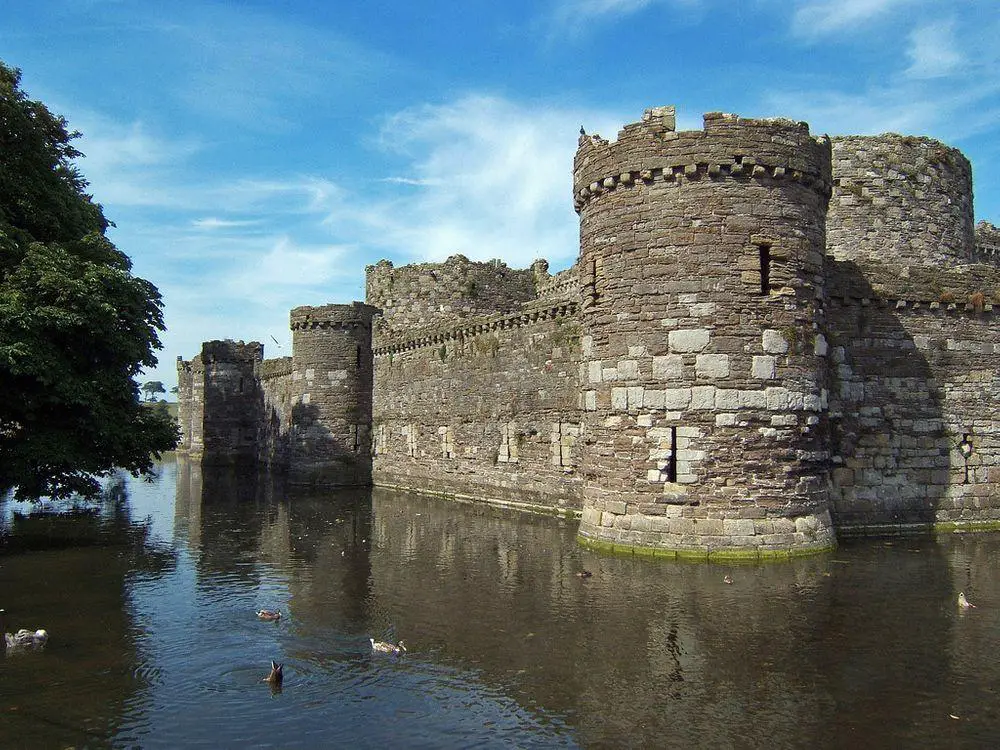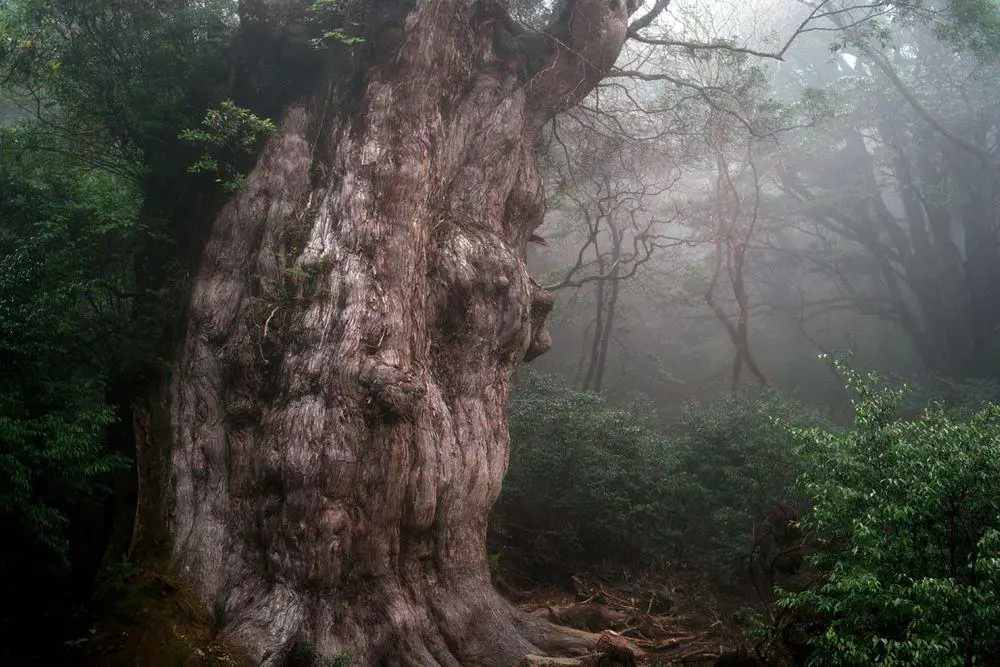 In short
In short
The enormoys yew at Mallwyd St Tydecho’s Church over the last few centuries developed a giant hollow that has divided the tree into several parts. Its circumference in 1998 was 10.06 m.
 30.8%
30.8%
GPS coordinates
Location, address
Species
Circumference
Map of the site
If you see this after your page is loaded completely, leafletJS files are missing.
 In detail
In detail
Mallwydd is an ancient site in Gwynedd near the border with Powys. According to tradition, already in the 6th century there was founded a Christian church.
The current church was built in the 14th century with multiple later rebuildings. This is an interesting church and, among other artefacts, there are also two enormous bones that, according to local tales, were unearthed in this area.
In the late 18th century in the churchyard of St Tydecho’s Church were five enormous yew trees. The largest of them still is there.
In 1998 the circumference of the giant yew at Mallwyd St Tydecho’s Church was 10.06 m (1.). It was measured at a height of 0.9 m. But today this male yew is not a single stem anymore: the hollow of the tree gradually increased and divided the yew tree into three main parts. Each of these three parts consists of several large trunks – branches. Similar to several other ancient yew trees, there is also a new stem in the centre of the hollow.
In the churchyard is one more enormous yew tree – female – that has a circumference of 5.64 m at a height of 1.5 m (1998, 1.).
The giant yews of Mallwyd have been well known for centuries long. In 1798 the largest tree had a circumference of 27 feet – 8.2 m. The tree had a single trunk until the middle of the 19th century at least.
References
- Yew/Yews at Mallwyd Wales, Ancient Yew Group, 1998. Accessed on December 25, 2023.
- Mallwyd, Snowdonia Guide. Accessed on December 25, 2023.
 Linked articles
Linked articles

Wonders of Wales
In Wales are located some of the most beautiful caves and waterfalls in the United Kingdom but even more are some of the world’s most impressive castles as well as medieval towns, palaces, and interesting archaeological monuments.

Trees
The category includes some of the most impressive and interesting separate trees in the world. The total number of tree species in the world still is a wild guess – maybe 10,000 and maybe 100,000 but most likely somewhere in between. Every month there are reported new tree species from the whole world, including Western Europe.

Wonders of the United Kingdom
Throughout many centuries the United Kingdom has enjoyed relative political stability and wealth. As a result, humans have created here countless amazing and well-preserved values of art and history.
 Recommended books
Recommended books
The God Tree
The God Tree is a great read and will make people think again and again about Yews’ – David Bellamy, the Naturalist. This is the first book to take up the quest for the Golden Bough since JG Frazer’s classic study in 1915 with the discovery of the bough growing once more, as the rare adornment of a small number of ancient Yews.
The Ancient Yew: A History of Taxus baccata
The gnarled, immutable yew tree is one of the most evocative sights in the British and Irish language, an evergreen impression of immortality, the tree that provides a living botanical link between our own landscapes and those of the distant past. This book tells the extraordinary story of the yew’s role in the landscape through the millennia, and makes a convincing case for the origins of many of the oldest trees, as markers of the holy places founded by Celtic saints in the early medieval ‘Dark Ages’.


